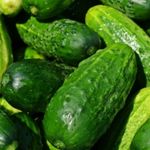From the Farm to Our Tables - Living History Farms
←
→
Page content transcription
If your browser does not render page correctly, please read the page content below
From the Farm to Our Tables
Let’s talk about your favorite foods. Do you like
pie? How about ice cream? Pizza? Or maybe ice cold
milk and cookies? All of those things end up on our
lunch table because of farmers. The basic ingredients
are grown on a farm, picked, or harvested and then
mixed together into our favorite foods. If you like to
cook, your family might buy just basic ingredients and
mix them together at home. Or you might buy the food
already made in a restaurant or mixed together in a
factory and frozen, or put into a can. It doesn’t matter—somewhere along the line those
basic ingredients started out on a farm!
For example, what goes into a pie? Let’s bake an apple pie. What ingredients will we
need? For the filling, we need apples, sugar, and spices. For the pie crust, we need flour
and maybe sugar and fat like butter or shortening, either from a plant or an animal. Where
do those ingredients come from? We could go to a grocery store. On the shelves, we’ll find
the sugar and the spices and butter and even milk to drink later with our pie. We might buy
our apples at a road-side stand or at an apple orchard. But where did those things come
from before they got to the store or the road-side stand?
The ingredients came from a farm. Some of the
farms are right here in Iowa. There are Iowa farms
that have chickens which lay eggs, cows that
produce milk for butter and cream, and corn for the
oils in shortening. Apples might come from a tree on
a farm here in Iowa or they might come all the way
from Washington State. Farms are found all over the
world. The sugar in our pie might come from sugar
beet plants grown in Minnesota or sugar cane plants
grown in Louisiana or even from Brazil! Cinnamon
might come from trees in China. Ingredients on farms are just part of the story though.
Who grew those foods? We forget to add in the faces of the people who take care of those
plants and animals.
So who are these farmers? In Iowa, there are about 87,000 farms. That may sound like a
lot, but actually it’s a pretty small amount. Over 3.1 million people live in Iowa in 2020, but
less than 143,000 people work on farms. That means for every 22 people living in Iowa,
only one of those 22 people works on a farm. Those 143,000 people work pretty hard.
They are helping to feed all of us other Iowans, and Americans, and people all over the
world with their crops and livestock. Some Iowa farmers live in the country on their
farmland. Some farmers live in small towns and travel to work on land in the country
owned by someone else. Some farmers grow only plants or only vegetables, or only fruit
trees. Some farmers raise livestock and no crops. Everyone farms a little bit differently and
they all have stories to tell about how they work.Meet a Farm Family!
Find out more about living and working on a modern farm
by watching the videos found on the Living History Farms'
Learning Fields microsite.
Visit Learning Fields
Upcoming Activities
On March 14, Living History Farms will celebrate
National Ag Day. It’s a day to spend time
thinking about and thanking farmers for growing
the foods we eat. It’s a great day to think about
where our food comes from and how it is grown
and why. Do you know where your favorite food
comes from? We invite you to spend time with us
on March 14, 2020 for a look at some of the
farmers, tools, and ingredients it takes to grow
food in Iowa.
Because March 14 also happens to be Pi Day, we'll also celebrate with pie and pie
themed activities. Drop into the Tangen House to help roll out pie dough, stop in the Drug
Store and smell the cooking spices used for pies, and print a pie recipe in the Advocate
Print Shop.
History Detectives
In this newsletter, we are looking at the farm ingredients that go into our favorite foods.
Even the smallest measure of ingredients and spices can make a big difference in the
finished recipe.
Can you match the ingredients in Column A to the finished recipes in Column B?
Column A Column BTry This: Farm to Table Web Picture In the center of a blank piece of paper, draw a circle about the size of your fist. In the circle, draw a
picture or write out your favorite recipe or
dish. Think about the ingredients in that dish. Draw
lines coming out of your recipe circle and draw
smaller circles. Draw or list your ingredients. For
each ingredient, draw a line to a new circle and
draw what type of plant or animal that ingredient
comes from. This is how food gets to your table. If
you can, ask an adult to help you look up where
around the world that plant or animal is farmed.
Recipe to Try: Apple Handpies
Here’s a quick and easy way to make a kid-sized apple pie! Farm wives in the 19th
century wished it were this easy! You will need an adult's help and these ingredients:
1-2 medium sized apples
3 Tbsp. granulated sugar
1 tsp. cinnamon
1 Tbsp. melted butter
A store-bought refrigerator pie crust or a tube of refrigerator biscuits
Roll out your pie crust on a floured table top and using a biscuit cutter cut an even number
of 3 ½ to 4 inch circles. If using biscuit dough, separate the biscuits and roll each one out
to about a 5 inch circle. Peel and slice your apple into thin slices. Toss the slices with
sugar and cinnamon. For pie dough circles place a tablespoon (3 slices or so) of apple mix
in center of circle. Place a second circle on the top and seal the edges by crimping with a
fork. Poke three or four holes in top crust with a fork to let out the steam. Brush the crust
with melted butter. (For biscuit dough, place apples on one half of each biscuit and fold the
dough in half over the filling. Crimp the edges and poke steam holes with a fork. Brush the
outside with butter.) Place your hand pies on a cookie sheet and bake for 10-15 minutes in
a 375 degree oven until golden brown. Allow to cool slightly and enjoy!
Word SearchYou can also read



























































